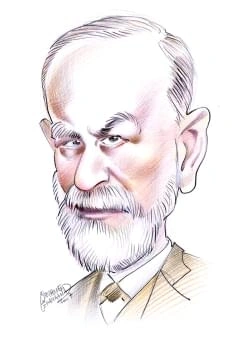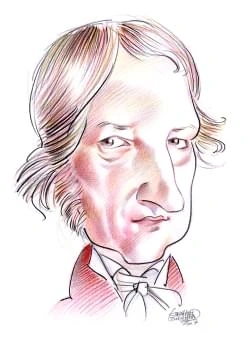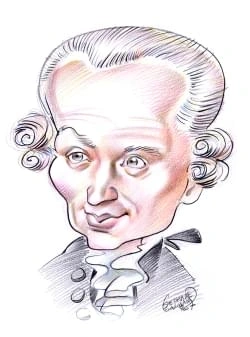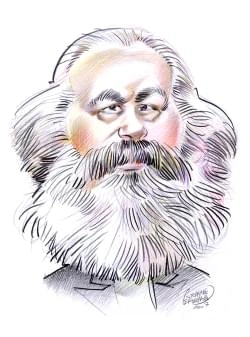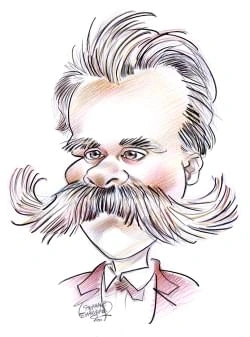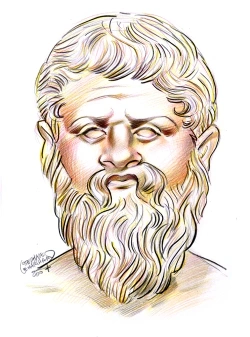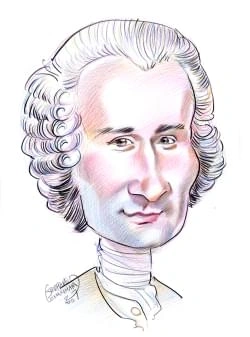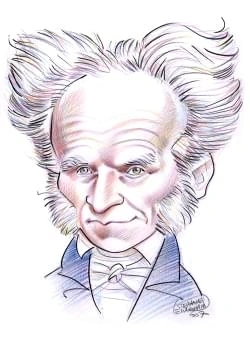766 résultats pour "although"
-
World War II .
the Nazi-Soviet Pact was signed. In the part published the next day, Germany and the Soviet Union agreed not to go to war against each other. A secret protocol gaveStalin a free hand in Finland, Estonia, Latvia, eastern Poland, and eastern Romania. See also German-Soviet Nonaggression Pact. III MILITARY OPERATIONS In the early morning hours of September 1, 1939, the German armies marched into Poland. On September 3 the British and French surprised Hitler by declaring war onGermany, but they...
-
Korean War.
During the summer of 1949, South Korea had expanded its army to about 90,000 troops, a strength the North matched in early 1950. The North had about 150 SovietT-34 tanks and a small but effective air force of 70 fighters and 62 light bombers—weapons either left behind when Soviet troops evacuated Korea or bought from theUSSR and China in 1949 and 1950. By June 1950 American data showed the two armies at about equal strength, with roughly equal numbers amassed along the 38thparallel. However, thi...
-
Korean War - History.
During the summer of 1949, South Korea had expanded its army to about 90,000 troops, a strength the North matched in early 1950. The North had about 150 SovietT-34 tanks and a small but effective air force of 70 fighters and 62 light bombers—weapons either left behind when Soviet troops evacuated Korea or bought from theUSSR and China in 1949 and 1950. By June 1950 American data showed the two armies at about equal strength, with roughly equal numbers amassed along the 38thparallel. However, thi...
-
Korean War - U.
During the summer of 1949, South Korea had expanded its army to about 90,000 troops, a strength the North matched in early 1950. The North had about 150 SovietT-34 tanks and a small but effective air force of 70 fighters and 62 light bombers—weapons either left behind when Soviet troops evacuated Korea or bought from theUSSR and China in 1949 and 1950. By June 1950 American data showed the two armies at about equal strength, with roughly equal numbers amassed along the 38thparallel. However, thi...
-
New Orleans - geography.
D Metropolitan Region The New Orleans metropolitan region covers 8,800 sq km (3,400 sq mi) and includes the counties—known in Louisiana as parishes— of Orleans, Jefferson, Saint Bernard, Saint Charles, Saint John the Baptist, Saint Tammany, Saint James, and Plaquemines. At the center is the city of New Orleans, which is coextensive withOrleans Parish. It has a land area of 468 sq km (181 sq mi). Extending from this base are numerous suburban towns in the surrounding parishes. Metairie, Harahan...
-
Kyrgyzstan - country.
are Bishkek, the capital, located on the Chu River in the far north; and Osh, located in the Fergana Valley. A Ethnic Groups Ethnic Kyrgyz make up about 65 percent of the population of Kyrgyzstan. Uzbeks, who live primarily in the Fergana Valley, constitute about 14 percent of thepopulation. Russians, who live principally in Bishkek and other industrial centers, make up about 13 percent of the population. Other ethnic groups include Hui (ChineseMuslims, also known as Dungans), Ukrainians, Uygur...
-
Latin American Independence.
be inferior and were not permitted a university education. In the lowest caste were the African slaves. As the Spanish monarchy tried to increase its authority, it was hampered by the power of the Catholic Church. The church, including various religious orders, hadacquired great wealth, including large holdings of land, in the colonies. The Jesuit order especially had gained extraordinary wealth and political influence, and it alsocontrolled much of the university and high school education in th...
-
Islam.
commanded to face the Kaaba, an ancient shrine in the city of Mecca. The Qur’an also refers to the recitation of parts of the Qur’an as a form of prayer. However, evenwith its numerous references, the Qur’an alone does not give exact instructions for this central ritual of prayer. The most detailed descriptions of the rituals for prayer derive from the example set by the prophet Muhammad and are preserved in later Islamic traditions. Somedetails of these rituals vary, however all Muslims agree t...
-
-
Rhode Island - geography.
C (73° F). Along the northern state line, the January mean temperature is about 1° C (about 2° F) colder than in Warwick in January. Along the ocean coast, theJanuary mean temperature is -1° C (30° F). Warm season temperatures are also influenced by the ocean and bay, so temperatures are usually cooler along the coastthan in the interior. The difference tends to be greatest in spring and early summer. Winter temperatures in Rhode Island are usually above -7° C (20° F), buttemperatures colder by...
-
Rhode Island - USA History.
C (73° F). Along the northern state line, the January mean temperature is about 1° C (about 2° F) colder than in Warwick in January. Along the ocean coast, theJanuary mean temperature is -1° C (30° F). Warm season temperatures are also influenced by the ocean and bay, so temperatures are usually cooler along the coastthan in the interior. The difference tends to be greatest in spring and early summer. Winter temperatures in Rhode Island are usually above -7° C (20° F), buttemperatures colder by...
-
Wisconsin (state) - geography.
-6° C (22° F) in the southeast, along the Lake Michigan shore. During winter extremely cold weather persists for several weeks at a time. C2 Precipitation Average annual precipitation ranges from 700 to 800 mm (28 to 32 in). Rainfall is generally heaviest during the spring and summer, and snowfall is generally moderatein the south, but can be quite heavy in the north. Thunderstorms, sometimes accompanied by devastating tornadoes, are common in spring and summer, particularly inthe southern part...
-
Wisconsin (state) - USA History.
-6° C (22° F) in the southeast, along the Lake Michigan shore. During winter extremely cold weather persists for several weeks at a time. C2 Precipitation Average annual precipitation ranges from 700 to 800 mm (28 to 32 in). Rainfall is generally heaviest during the spring and summer, and snowfall is generally moderatein the south, but can be quite heavy in the north. Thunderstorms, sometimes accompanied by devastating tornadoes, are common in spring and summer, particularly inthe southern part...
-
Bible.
collection of many different books. The Old Testament is by no means a unified book in terms of authorship, date of composition, or literary type; it is instead a veritablelibrary. Generally speaking, the books of the Old Testament and their component parts may be identified as narratives, poetic works, prophetic works, law, or apocalypses.Most of these are broad categories that include various distinct types or genres of literature and oral tradition. None of these categories is limited to the...
-
Han Dynasty - History.
However, these reforms faced serious opposition. The feudal barons formed an alliance and rebelled against Wang Mang. They were joined by members of the Liufamily, who were descended from Jingdi (Ching-ti), a former Han emperor, and a civil war followed. As the empire fell into disorder, militant secret societies formedarmed bands and attacked villages and towns. Wang Mang had believed that proper institutions would eventually bring peace to China, but in AD 23, an army led by the Liu clan brea...
-
Popular Music
I
INTRODUCTION
Satchmo Sings "Back O' Town Blues"
One of the founders of instrumental jazz music, American Louis Armstrong, known as Satchmo, also profoundly influenced
vocal jazz and popular song.
disseminating popular music until the 1920s remained printed sheet music. By the late 19th century, the music-publishing business was centralized in New York City,particularly in an area of lower Manhattan called Tin Pan Alley. “After the Ball” (1892) by Charles K. Harris, the first popular song to sell 1 million copies—in this case, ofsheet music—inspired rapid growth in the music-publishing industry. Composers were hired to rapidly produce popular songs by the dozens, and the techniques ofFost...
-
Roman Art and Architecture - History.
Racecourses or circuses were also built in many cities for holding chariot races and horse races. Rome’s circus-shaped Piazza Navona occupies the site of one that wasbuilt during the reign ( AD 81-96) of the emperor Domitian. The largest circus in Rome, the Circus Maximus, held about 200,000 spectators. E Public Baths Large cities and small towns alike also had public baths ( thermae ); under the Republic they were generally made up of a suite of dressing rooms and bathing chambers with hot- ,...
-
-
Bird.
I
INTRODUCTION
Bird, animal with feathers and wings. Birds are the only
B Physical Adaptations for Flight The internal body parts of all birds, including flightless ones, reflect the evolution of birds as flying creatures. Birds have lightweight skeletons in which many of themajor bones are hollow. A unique feature of birds is the furculum, or wishbone, which is comparable to the collarbones of humans, although in birds the left and rightportions are fused together. The furculum absorbs the shock of wing motion and acts as a spring to help birds breathe while they...
-
Bird - biology.
B Physical Adaptations for Flight The internal body parts of all birds, including flightless ones, reflect the evolution of birds as flying creatures. Birds have lightweight skeletons in which many of themajor bones are hollow. A unique feature of birds is the furculum, or wishbone, which is comparable to the collarbones of humans, although in birds the left and rightportions are fused together. The furculum absorbs the shock of wing motion and acts as a spring to help birds breathe while they...
-
Stone Age.
limestone, quartzite, and indurated shale. Ground stone tools could be made on a wider range of raw material types, including coarser grained rock such as granite. Flaking produces several different types of stone artifacts, which archaeologists look for at prehistoric sites. The parent pieces of rock from which chips have beendetached are called cores, and the chips that have been removed from cores are called flakes. A flake that has had yet smaller flakes removed from one or more edgesin orde...
-
Geographic Exploration.
The commercial reason for exploration has been a consistent driving force. In 1492 the great navigator Christopher Columbus sailed west across the Atlantic Oceanseeking a new, shorter, and cheaper route to reach the riches of East Asia, and Portuguese explorer Vasco da Gama circumnavigated Africa for much the same reason.Yet similar investigations of the profitable eastern trade had already been made by Arab sailors. Arab trading ships were sailing from the Arabian Sea to southeasternAsia probab...
-
Geographic Exploration - explorer.
The commercial reason for exploration has been a consistent driving force. In 1492 the great navigator Christopher Columbus sailed west across the Atlantic Oceanseeking a new, shorter, and cheaper route to reach the riches of East Asia, and Portuguese explorer Vasco da Gama circumnavigated Africa for much the same reason.Yet similar investigations of the profitable eastern trade had already been made by Arab sailors. Arab trading ships were sailing from the Arabian Sea to southeasternAsia probab...
-
Lebanon (country) - country.
during the civil war. Within the country, thousands of Shia Muslim refugees fled fighting in southern Lebanon in the 1990s and moved into shantytowns in Beirut’ssouthern suburbs. Lebanon’s major cities were greatly affected by the civil war. Beirut has gradually regained most of its prewar population and remains the country’s largest city. Tripoli,the northern port, is the second largest city. Jūniyah, north of Beirut, was developed as a wartime port and subsequently had a population boom. Za ḩl...
-
New Brunswick - Geography.
Grand Lake, the largest lake in New Brunswick, is in the lowlands, east of Fredericton. Most other lakes are located in the northern and southwestern parts of NewBrunswick. D Climate New Brunswick has a continental climate that is moderated by maritime influences in the coastal areas. As a result, coastal regions are slightly warmer in the winter andslightly cooler in the summer than are interior regions. Annual temperature variations are large, with the January mean usually at least 25 to 28°C...
-
New Brunswick - Canadian History.
Grand Lake, the largest lake in New Brunswick, is in the lowlands, east of Fredericton. Most other lakes are located in the northern and southwestern parts of NewBrunswick. D Climate New Brunswick has a continental climate that is moderated by maritime influences in the coastal areas. As a result, coastal regions are slightly warmer in the winter andslightly cooler in the summer than are interior regions. Annual temperature variations are large, with the January mean usually at least 25 to 28°C...
-
-
New York (city) - geography.
The Bronx is the fourth largest and the northernmost of the five boroughs, and the only one on the American mainland. Even so, it is surrounded by water on threesides: Long Island Sound on the east, the Harlem and East rivers on the south, and Hudson River on the west. Encompassing 109 sq km (42 sq mi), it had 1,332,650inhabitants in 2000. Largely residential, the Bronx includes dozens of vibrant neighborhoods. Fieldston is particularly elegant, with great stone houses set among spacious lawns a...
-
Hungary - country.
Northern Hungary lacks sufficient water, especially between July and October, when precipitation levels are typically low. Canals irrigate the Great Hungarian Plain,which is subject to drought. Because of the country’s mainly flat terrain, only limited water resources can be harnessed for hydroelectric power. F Environmental Issues Rapid industrialization in Hungary following World War II contributed significantly to a number of major environmental problems, including air, water, and soil pollu...
-
New Mexico - geography.
New Mexico’s major river is the Río Grande, originating in southern Colorado, and flowing southward for 760 km (470 mi) through the state. Between the San LuisValley and Española Valley the river flows in a deep canyon known as the Río Grande Gorge; then, below White Rock Canyon, it flows through several valleys containingagricultural land. Most of the water of the Río Grande is used to irrigate these valleys. The Río Grande’s waterflow in New Mexico is extremely low. One of the major tributarie...
-
New Mexico - USA History.
New Mexico’s major river is the Río Grande, originating in southern Colorado, and flowing southward for 760 km (470 mi) through the state. Between the San LuisValley and Española Valley the river flows in a deep canyon known as the Río Grande Gorge; then, below White Rock Canyon, it flows through several valleys containingagricultural land. Most of the water of the Río Grande is used to irrigate these valleys. The Río Grande’s waterflow in New Mexico is extremely low. One of the major tributarie...
-
West Virginia - geography.
Forests, mostly of hardwood varieties, cover 79 percent of West Virginia. The principal commercial species are the oak, yellow poplar, maple, birch, beech, black walnut,hickory, and gum. Softwoods include pines and hemlock firs. Flowering trees include the wild crab apple, dogwood, hawthorn, and redbud. Among the many floweringbushes and plants are the rhododendron, which is the state flower, the laurel, blueberry, hepatica, wild geranium, and black-eyed Susan. Insects and disease, mostly introd...
-
West Virginia - USA History.
Forests, mostly of hardwood varieties, cover 79 percent of West Virginia. The principal commercial species are the oak, yellow poplar, maple, birch, beech, black walnut,hickory, and gum. Softwoods include pines and hemlock firs. Flowering trees include the wild crab apple, dogwood, hawthorn, and redbud. Among the many floweringbushes and plants are the rhododendron, which is the state flower, the laurel, blueberry, hepatica, wild geranium, and black-eyed Susan. Insects and disease, mostly introd...
-
Genetics - biology.
construct identical buildings. Just as each contractor would require a full copy of the blueprint to construct a complete building, each new cell needs a complete copy ofan organism’s genetic information to function properly. Organisms use two types of cell division to ensure that DNA is passed down from cell to cell during reproduction. Simple one-celled organisms and other organisms thatreproduce asexually—that is, without the joining of cells from two different organisms—reproduce by a proces...
-
Folk Dance
I
INTRODUCTION
Traditional Irish Dancing
Irish dancing comprises mainly reels and jigs and may be accompanied by lively folk music played on the fiddle, harp, or
bagpipes.
Highland Games and DancesHighland dances are part of the Highland Games, a series of events held annually in various parts of Scotland, Canada,and the United States. Dance historians point out that warriors from the Scottish Highlands once went into battle dancingand playing the bagpipes. Highland dances, performed to music played on bagpipes or fiddles, remain an important part ofScottish culture.Courtesy of BBC Worldwide Americas. All Rights Reserved. Folk dances are usually thought to be simp...
-
-
Republic of Singapore - country.
Singaporeans of Chinese and Indian ancestry live in small, nuclear families. Housing favors smaller families, as most units consist of small apartments in high-risebuildings. Western clothing is common, and foods reflect the Chinese, Malay, and Indian origins of the people. D Social Issues Since Singapore became an independent state in 1965, government policies have brought orderliness and efficiency to the country. Examples are supplanting slum andsquatter areas with high-rise public housing p...
-
Human Sexuality.
About six weeks after conception, if a Y chromosome is present in the embryo's cells (as it is in normal males), a gene on the chromosome directs the undifferentiatedgonads to become testes. If the Y chromosome is not present (as in normal females), the undifferentiated gonads will become ovaries. If the gonads become testes, they begin to produce androgens (male hormones, primarily testosterone) by about eight weeks after conception. These androgens stimulate development of the one set of the...
-
Dinosaur - biology.
The behavior of dinosaurs was governed by their metabolism and by their central nervous system. The dinosaurs’ metabolism—the internal activities that supply thebody’s energy needs—affected their activity level. It is unclear whether dinosaurs were purely endothermic (warm-blooded), like modern mammals, or ectothermic (cold-blooded), like modern reptiles. Endotherms regulate their body temperature internally by means of their metabolism, rather than by using the temperature oftheir surroundin...
-
Turkmenistan - country.
A Ethnic Groups With Turkmens constituting 77 percent of the population, Turkmenistan is the most ethnically homogeneous of the Central Asian republics. Uzbeks make up the largestminority group, with about 9 percent of the population. Other ethnic groups include Russians, Kazakhs, Tatars, Ukrainians, Azeris (ethnic Azerbaijanis), Armenians, andBaluch. In 1993 a bilateral treaty between Turkmenistan and Russia granted dual citizenship to Russians in the republic. At the 1995 census Russians cons...
-
Jazz
I
INTRODUCTION
Joshua Redman
Saxophonist Joshua Redman, a graduate of Harvard University, became a fast-rising star in jazz in the 1990s.
performed a highly produced, jazz-inspired form of blues that was popular in traveling minstrel shows and vaudeville. Thisexample is from the song “St. Louis Blues,” written by American composer and trumpet player W. C. Handy in 1914 andrecorded by Smith in 1925."St. Louis Blues" performed by Bessie Smith, from The Riverside History of Classic Jazz (Cat.# Riverside RB-005) Riverside Records under master license to Fantasy, Inc. All rightsreserved./Frank DriggsCollection/Archive Photos Jazz is ro...
-
Andrew Jackson.
against a resolution praising President George Washington’s administration. Jackson claimed that Washington’s policy toward Native Americans was too lenient and thatJay’s Treaty, concluded with the British under Washington’s administration, was too damaging to American interests. After one year in the House, Jackson was elected to fill out an unexpired term in the U.S. Senate, the other chamber of the Congress of the United States. He servedfrom September 1797 to April 1798 and then retired to p...
-
Andrew Jackson
against a resolution praising President George Washington’s administration. Jackson claimed that Washington’s policy toward Native Americans was too lenient and thatJay’s Treaty, concluded with the British under Washington’s administration, was too damaging to American interests. After one year in the House, Jackson was elected to fill out an unexpired term in the U.S. Senate, the other chamber of the Congress of the United States. He servedfrom September 1797 to April 1798 and then retired to p...
-
Andrew Jackson - USA History.
against a resolution praising President George Washington’s administration. Jackson claimed that Washington’s policy toward Native Americans was too lenient and thatJay’s Treaty, concluded with the British under Washington’s administration, was too damaging to American interests. After one year in the House, Jackson was elected to fill out an unexpired term in the U.S. Senate, the other chamber of the Congress of the United States. He servedfrom September 1797 to April 1798 and then retired to p...
-
-
Sri Lanka - country.
acacias, and orchids are found in many areas. The animal life of Sri Lanka includes 88 species of mammals, 21 of which are threatened with extinction. The Asian elephant, cheetah, leopard, and several species ofmonkey are endangered and officially protected. The island’s many species of primates include the long-tailed langur, toque macaque, and slender loris. Other mammalsinclude the sloth bear, several species of deer, mongoose, and wild boar. Reptiles are numerous, with 144 known species. Som...
-
Maine - geography.
temperatures range from 17° to 21°C (62° to 70°F) with the southern interior being the warmest and the east coast and north the coolest. However, daytime summertemperatures may reach the lower 30°s C (lower 90°s F), and temperatures in winter have fallen as low as -44°C (-48°F) in the interior. D2 Precipitation Precipitation (rainfall and snowfall) in Maine is evenly distributed throughout the year. Most areas receive from 860 to 1,020 mm (34 to 40 in) yearly, although parts ofthe coast are som...
-
Maine - USA History.
temperatures range from 17° to 21°C (62° to 70°F) with the southern interior being the warmest and the east coast and north the coolest. However, daytime summertemperatures may reach the lower 30°s C (lower 90°s F), and temperatures in winter have fallen as low as -44°C (-48°F) in the interior. D2 Precipitation Precipitation (rainfall and snowfall) in Maine is evenly distributed throughout the year. Most areas receive from 860 to 1,020 mm (34 to 40 in) yearly, although parts ofthe coast are som...
-
Arkansas - geography.
temperature rises to the upper 30°s C (lower 100°s F). C2 Precipitation Arkansas receives about 1,000 to 1,300 mm (about 40 to 50 in) of precipitation a year, and some areas receive even more. Most of the rain comes during winter andspring and at times is so heavy as to cause flooding. Snow is rare in the south but amounts to more than 250 mm (10 in) a year in the mountains. C3 Growing Season Arkansas has a long growing season. It averages 211 days for the state as a whole and ranges from 241...
-
Arkansas - USA History.
temperature rises to the upper 30°s C (lower 100°s F). C2 Precipitation Arkansas receives about 1,000 to 1,300 mm (about 40 to 50 in) of precipitation a year, and some areas receive even more. Most of the rain comes during winter andspring and at times is so heavy as to cause flooding. Snow is rare in the south but amounts to more than 250 mm (10 in) a year in the mountains. C3 Growing Season Arkansas has a long growing season. It averages 211 days for the state as a whole and ranges from 241...
-
Georgia (state) - geography.
B Rivers and Lakes Most of the rivers of Georgia drain eastward to the Atlantic Ocean proper or southward to the Gulf of Mexico. Only a few flow northward to the Tennessee River, which isa major tributary of the Mississippi River. Most of the rivers flowing to the coasts are navigable by barges and small craft as far upstream as the Fall Line. The major river flowing to the Atlantic is the Savannah River, which, with the Tugaloo River, one of its headwaters, forms most of the state’s eastern bo...
-
Georgia (state) - USA History.
B Rivers and Lakes Most of the rivers of Georgia drain eastward to the Atlantic Ocean proper or southward to the Gulf of Mexico. Only a few flow northward to the Tennessee River, which isa major tributary of the Mississippi River. Most of the rivers flowing to the coasts are navigable by barges and small craft as far upstream as the Fall Line. The major river flowing to the Atlantic is the Savannah River, which, with the Tugaloo River, one of its headwaters, forms most of the state’s eastern bo...
-
Zambia - country.
The Livingstone Museum, at Livingstone, has a collection relating to the archaeology and natural history of southern Africa. The Institute for African Studies of theUniversity of Zambia publishes studies relating to central Africa. IV ECONOMY The wealth of Zambia is based largely on mining in the rich copper belt, and downturns in copper prices have severely damaging economic consequences. Someprocessing and manufacturing has been started since independence, and during the 1970s attempts were...
-
-
Impressionism (art)
I
INTRODUCTION
Vegetable Garden at the Hermitage, Pontoise
Vegetable Garden at the Hermitage, Pontoise (1879) was painted by the French artist Camille Pissarro.
the Grass; 1863, Musée d’Orsay, Paris), which depicts a nude woman at a woodland picnic. To emphasize the woman’snakedness, Manet not only shows that she has recently disrobed (by painting her clothes in a heap nearby) but alsodepicts her male companions fully clothed. In addition, the woman stares directly and unabashedly at the viewer, makingus feel almost like voyeurs as we gaze back. Manet’s painting style–the flat figures, which look almost like cutouts, andloose brushwork–also bewildered a...
-
Confucius
official to several of the highest positions in the land. Nor does the story end there. By the time of the Han dynasty (206 BC-AD 220), Confucius was celebrated as the ‘uncrowned king' of the state of Lu, and by the fourth century AD, any prefecture wanting to define itself as a political entity was required by imperial decree to erect a temple to Confucius. Gods in China are local cultural heroes who are remembered by history as having contributed meaning and value to the tradition, and of...
}})
